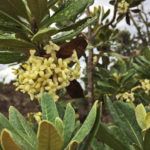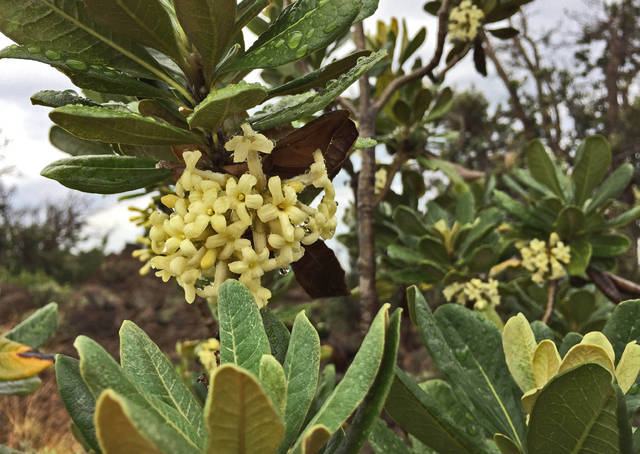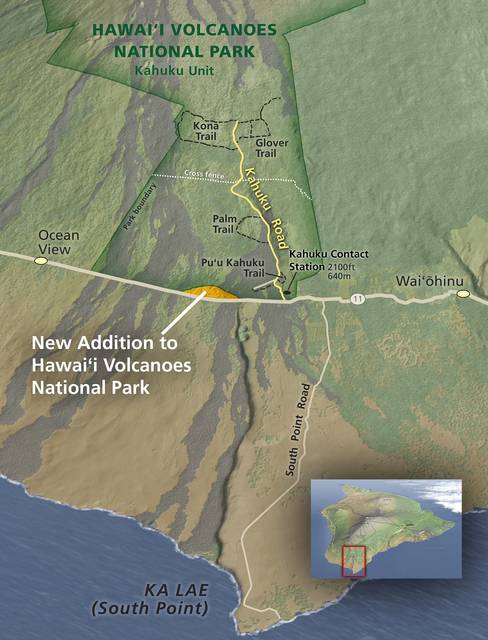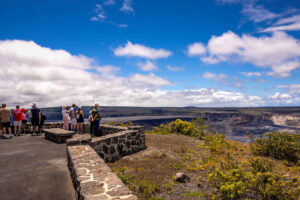The Nature Conservancy has transferred ownership of 222 acres of land to Hawaii Volcanoes National Park.
“We are thrilled about the new acquisition,” park spokeswoman Jessica Ferracane said in a message to the Tribune-Herald.
The parcel extends 1.6 miles along Highway 11 between Ocean View and Na‘alehu in the Ka‘u District. The land was once part of Kahuku Ranch.
The park is “exploring ways” to open the new acquisition to park visitors.
“It’s too early to say, but we are looking at ways to share the new parcel with the public while protecting the native plants and animals there,” Ferracane said. “In addition, there are some culturally and biologically sensitive features in the parcel.”
Nature Conservancy spokeswoman Evelyn Wight said the organization acquired the 222 acres with the idea to conserve native species — knowing the park eventually would want to acquire the land.
The park will now continue the conservancy’s efforts.
“Keeping out invasive non-native pests and other threats is one priority,” Ferracane said. “Right now, there is no rapid ohia death detected in the area.”
“This parcel contains rare dryland forest plants, native birds and insects, and a lava tube system,” said park Superintendent Cindy Orlando.
Invasive weeds and bighorn sheep called mouflon have been problematic on the tract of land. But the Nature Conservancy has been working to control Christmas berry and other weeds, and the organization’s volunteers and staff have cleared more than 40 acres.
“This property is a gem that links two types of forest habitat that are increasingly rare in Hawaii: lowland mesic, or temperate, forest and lowland dry forest,” said Shalan Crysdale, the conservancy’s Hawaii Island program director. “These forest areas tend to coincide with where people like to live, so they are threatened globally and here in Hawaii.”
The Nature Conservancy conducted biological surveys and learned that native plants on the land include lama, or Hawaiian persimmon; ‘ohi‘a trees; a flexible hardwood tree with fragrant blossoms called ‘ulei; a shrub with colorful berries called pukiawe; a common food for the ‘alala, the Hawaiian crow, called ho‘awa; and a‘ali‘i, a flexible shrub with colorful seed pods.
Native wildlife found on the land parcel include endangered ‘io, the Hawaiian hawk; the Hawaiian hoary bat, or ‘ope‘ape‘a; several rare species of insects; and two honeycreepers, the ‘apapane and the ‘amakihi.
Ferracane said the park has now grown to 333,308 acres.
Email Jeff Hansel at jhansel@hawaiitribune-herald.com.









